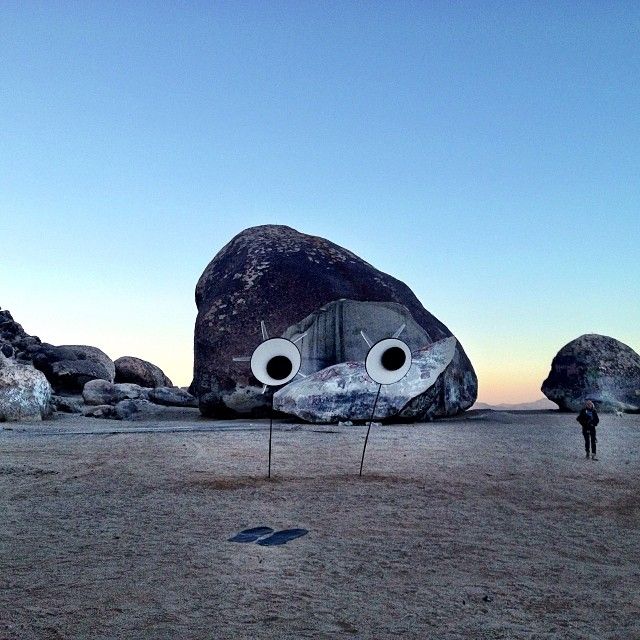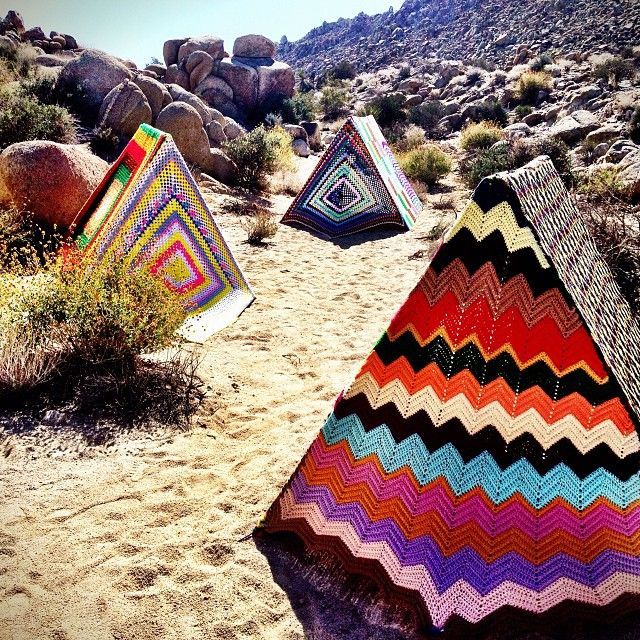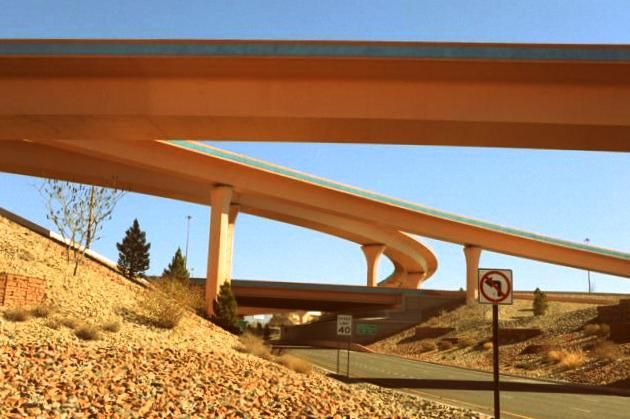Over on LA Weekly’s art blog this morning I found out about a huge outdoor art gallery that spans from Joshua Tree to Albuquerque: the High Desert Test Sites. Started in 2002 by artists Andrea Zittel and Aurora Tang, the HDTS allows artists to experiment with art whilst engaging with otherwise deserted desert communities. This year’s HDTS covers 700 miles of desert terrain and includes sites of little fame like 29 Palms, Wonder Valley, Pioneertown, and Yucca Valley (the perfect desert roadtrip, if you ask me).
The HDTS folks’ mission statements include all of the following:
To challenge traditional conventions of ownership, property, and patronage. Most projects will ultimately belong to no one and are intended to melt back into the landscape as new ones emerge.
To “insert” art directly into a life, a landscape, or a community where it will sink or swim based on a set of criteria beyond that of art world institutions and galleries.
To encourage art that remains in the context for which it was created—work will be born, live, and die in the same spot.
To initiate an organism in its own right—one that is bigger and richer than the vision of any single artist, architect, designer, or curator.
To create a “center” outside of any preexisting centers. We are inspired by individuals and groups working outside of existing cultural capitals, who are able to make intellectually rigorous and culturally relevant work in whatever location they happen to be in.
To find common ground between contemporary art and localized art issues.
To contribute to a community in which art can truly make a difference. HDTS exists in a series of communities that edge one of the largest suburban sprawls in the nation. Many of the artists who settle in this area are from larger cities, but want to live in a place where they can shape the development of their own community. For the time being, there is still a feeling in the air that if we join together we can still hold back the salmon stucco housing tracts and big box retail centers. Well maybe.
They’ve included a road map with a list of all of the sites for you to hunt down. I can’t help but be reminded of the Albuquerque Petroglyph National Monument park. If you’ve ever been, you’d remember how awesome it was to roam the scorching desert hills looking for beautiful etchings scratched into black boulders. The HDTS sounds like it’d have that same scavenger effect — roaming the desert on a larger scale looking for hidden beauty in the desert.


LA Weekly‘s picks include the following:
Desert Applique by Lea Donnan: Yarn-bombing goes high art. This cluster of salvaged crochet blankets have been reimagined as makeshifts tents, dotting the semi-barren earth with a colorful afghan encampment.
Roadside Monument 3 by Cayetano Ferrer: A desert megalith becomes luminescent. Ferrer erected twin columns off the highway that allow any would-be artists to “draw” on the surface using light in the dark. The images fade over time, leaving only the memory of neon graffiti.
Googly Eyes for Giant Rock by Bettina Hubby: One of the more quirky interventions at High Desert Test Sites, Giant Rock is now everyone’s pet rock. The oversized, wind-powered googly eyes not only provided great Instagram fodder, they also provided light for a glow-in-the-dark cocktail party. Burning Man, eat your heart out.
Naima by Debbie Long: Long retrofitted a camping trailer with a skylight, and built a white interior chamber studded with hand-cast glass objects based on items collected in the desert. The natural light illuminates the plum-colored glass, so the viewer feels like they just stepped into a gleaming crystal cave.

Desert sky image by artist Pascual Sisto.

